Case Studies.
Add Case Study
Our Case Study database tracks 22,657 case studies in the global enterprise technology ecosystem.
Filters allow you to explore case studies quickly and efficiently.
Download Excel
Filters
-
(6,653)
- (2,601)
- (2,127)
- (945)
- View all
-
(5,642)
- (2,469)
- (1,692)
- (826)
- View all
-
(5,571)
- (2,178)
- (1,766)
- (643)
- View all
-
(5,247)
- (2,179)
- (1,715)
- (1,321)
- View all
-
(2,881)
- (1,448)
- (574)
- (376)
- View all
- View all 15 Technologies
- (1,985)
- (1,985)
- (1,915)
- (1,679)
- (1,629)
- View all 42 Industries
- (8,728)
- (4,742)
- (3,618)
- (3,233)
- (2,947)
- View all 13 Functional Areas
- (3,304)
- (2,787)
- (2,603)
- (2,006)
- (1,630)
- View all 129 Use Cases
- (13,581)
- (5,296)
- (4,272)
- (3,520)
- (2,856)
- View all 9 Services
- (504)
- (432)
- (416)
- (382)
- (301)
- View all 1083 Suppliers
Selected Filters
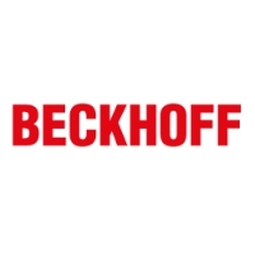
|
Series Production with Lot-size-1 Flexibility
Nobilia manufactures customized fitted kitchens with a lot size of 1. They require maximum transparency of tracking design data and individual processing steps so that they can locate a particular piece of kitchen furniture in the sequence of processes.
|
|
|
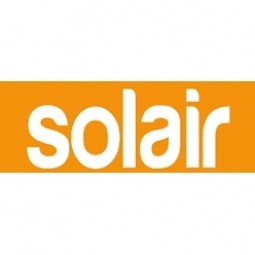
|
IoT and PLM Integration
Zadi Group wanted to make innovative technologies one of its main differentiators. They are planning on moving away from the old legacy client server systems to a solution in the cloud.
|
|
|
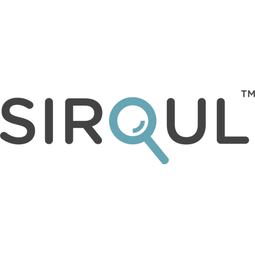
|
Engaging Fans at one of the Largest Stadiums in the USA
Engaging and delighting fans has become the number one priority. However, the identity and behavior of fans within the stadium have been impossible to detect until Sirqul. Furthermore, standalone mobile apps historically have only seen a 5-30% penetration rate, thus leaving venues with poor data, insights and little interaction with the fan itself.This large stadium was looking for a set of recommendations to improve the fan experience, increase revenue and optimize operational efficiency based on this never seen before data.
|
|
|
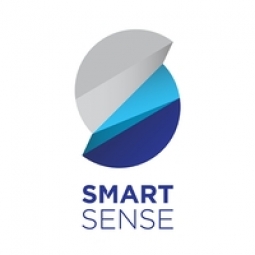
|
Monitoring Air Polluants with AirQ
Air Quality and the monitoring of pollutants that can cause health issues is becoming more important to our daily lives with governments and regulators keen to both monitor and manage the impacts of poor air quality caused by a range of pollutants.
|
|
|

|
Fleet Management Solution
A major trucking company in Africa was looking for a solution to track and manage their fleet of vehicles. Tracking was essential to ensure that the trucks were being driven safely and on the most optimal route.
|
|
|

|
ZipLine
When connected devices, from simple IoT buttons to complex mining equipment, medical devices and more are distributed across organizations, sites, and locations with many roles and data types along with requirements for who can access which data, you've got an IoT Data Management, Access Control, and Device Lifecycle nightmare.
|
|
|
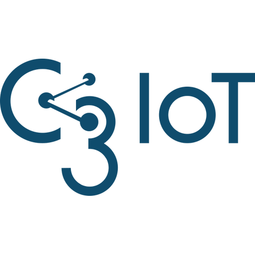
|
Large Oil Producer Leverages Advanced Analytics Platform
Approximately 17,000 wells in the customer's portfolio have beam pump artificial lift technology. While beam pump technology is relatively inexpensive compared to other artificial lift technology, beam pumps fail frequently, at rates ranging from 66% to 95% per year. Unexpected failures result in weeks of lost production, emergency maintenance expenses, and costly equipment replacements.
|
|
|
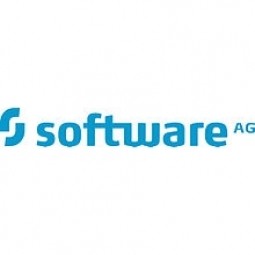
|
PREDICTIVE MAINTENANCE
Manufacturers rightly focus on improving profit margins and growing revenue. Attracting new customers, selling more products and lean practices can help. However, as equipment sophistication increases, so does the ability to monitor equipment. Manufacturers can now develop revenue from maintenance services. Preventive maintenance has its advantages but to really drive uptime and maintain service levels, predictive maintenance is needed. Seamless IoT and machine sensor data integration is critical as well as a low-latency messaging backbone for scalable, fast and reliable transport. Delivering potentially large quantities of data at sub-second speeds is key to downstream activities. webMethods Integration, featuring Universal Messaging, addresses this need with an enterprise-grade service bus for connectivity, messaging, transformation and security of machine data for advanced real-time analytics.
|
|
|
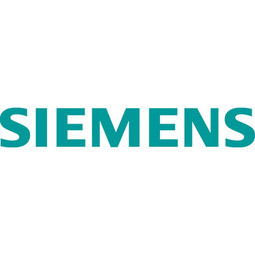
|
Digital Twin in Pharmaceutical Manufacturing
GSK wanted to improve their vaccine manufacturing processes and see how they could effectively optimize the development process.
|
|
|

|
Single Network for Multiple Smart Grid Services (ComEd)
With the passage of Energy Infrastructure Modernization Act (EIMA), ComEd was required to improve its overall system reliability. In order to reach the goals outlined in the law, ComEd decided to leverage a common network for multiple applications, including advanced metering infrastructure (AMI), distribution automation (DA) and smart city programs. With a modernized communications infrastructure, the utility would be able to increase grid reliability by identifying problems faster, optimizing business processes, automating problem resolution and reducing truck rolls.
|
|
|

|
Mining Firm Quadruples Production, with Internet of Everything
Dundee Precious Metal’s flagship mine, in Chelopech, Bulgaria, produces a gold, copper, and silver concentrate set a goal to increase production by 30%. Dundee wanted to increase production quality and output without increasing headcount and resources, improve miner safety, and minimize cost.
|
|
|
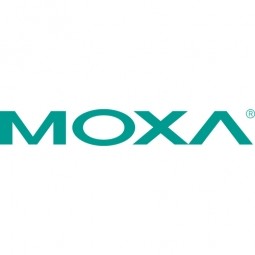
|
Using SNMP for a Ethernet-Based Home Automation System
A startup company was developing a product which provides service partners with an integrated e-services platform that allows customers to remotely monitor and control devices in their home or business. In order to complete their project, the startup needed a control system that could monitor and control the many different devices used by their potential customers, preferably with an open protocol for greater flexibility. SNMP was their first choice, as it is commonly used and well understood in the IT field. The next step was to choose an I/O server to connect to the sensors in a home automation system. System Requirements - Open Ethernet-based procotol - SNMP protocol for I/O control - Compact size to save space - Long-term support and services
|
|
|
---nasdaq--amzn_14.jpg)
|
NASA/JPL's Mars Curiosity Mission
NASA's Jet Propulsion Laboratory wanted to share the launching of Curiosity with fans by providing up-to-the-minute details of the mission. Supporting hundreds of thousands of concurrent visitors to the website would have been very difficult since NASA did not have significant web and live video streaming infrastructure.
|
|
|

|
Driving Network Efficiency and Fraud Detection Efforts
Baltimore Gas and Electric Company (BGE) wanted to optimize the deployment and ongoing health of its advanced metering infrastructure (AMI) network and identify and reduce unbilled energy usage. BGE wanted a solution to deliver an annual economic benefit of $20 million.
|
|
|
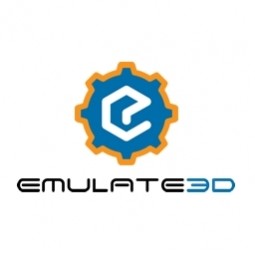
|
Intralox Using Demo3D Case Study
Intralox strives to create significant economic value for our customers by optimizing their conveyance systems. Intralox wants to emulate real-world production environments for end users and OEMs working in multiple industries, including packaging, warehousing, parcel, beverage, brewery, food, tire, and consumer goods. They frequently had to perform physical tests to demonstrate to customers how ARB equipment would handle their products.
|
|
|
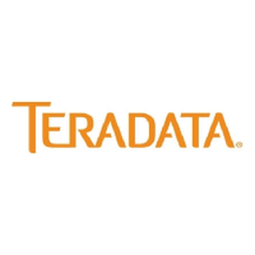
|
The Internet of Trains
Train operators the world over are expected to work miracles, i.e. never to be late. So, with acute service and availability targets to meet, an efficient maintenance program is important. And data-enabled functionality is a must for Siemens. Reactive maintenance (after an incident) and routine, preventive maintenance with its visual inspections and scheduled exchange of components, are no longer enough. We’ve moved on to more cost-effective, condition-based, predictive maintenance. The actual condition of components is measured via the transfer and remote monitoring of diagnostic sensor data; data which is also used to analyse patterns and trends. This helps predict when a component is likely to fail, so it can be repaired before anything untoward happens. To ensure the commercial sustainability of this approach, Siemens needs to use and re-use existing data, creating a kind of ‘Internet of Trains’. Towards this end, they’re analysing sensor data in near real time, which means they can react very quickly, ensuring that customer transport services aren’t interrupted. “It is really difficult to define every issue before it impacts operations using only data from the trains”, Kress explains. However, recent success stories prove that everything is possible.
|
|
|

|
Fastenal Builds the Future of Manufacturing with MachineMetrics
Fastenal's objective was to better understand their machine downtime, utilization, quality issues, and to embrace cutting-edge manufacturing technology/process improvement capabilities to bring their team to the next level. However, there was a lack of real-time data, visualization, and actionable insights made this transition impossible.
|
|
|
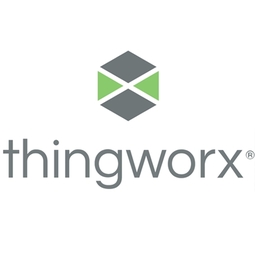
|
Smart, Connected Applications Maximize Agricultural Business Performance
OnFarm needed to move quickly to capitalize on a significant "smart agriculture" opportunity to build connected applications and dashboards that captured and monitored sensors in the field and provided actionable data back to their customers. The overall solution OnFarm determined necessary was a set of "dashboard-driven connected services utilizing an IoT backend" that would accomplish several key things: • Easily collect data from incompatible sensors via wireless networks • Provide a means to integrate, analyze, and correlate different data sets of information into easily-understood and easy-to-customize reports leading to specific actionable outcomes • Manage end-user permissions, distribute reports and business intelligence through a customizable Web interface that would include dashboards, allowing custom organization of data applicable to the business employing OnFarm's suite of services
|
|
|
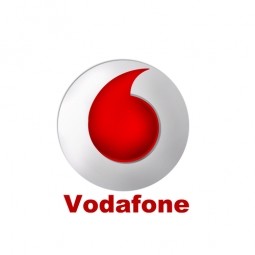
|
Helping Enexis Power Ahead with Smart Meter Rollout
Enexis is an independent grid operator and one of the largest energy distributors in the Netherlands. Working with energy suppliers, it manages 2 million gas and 2.6 million electricity connections to customers in seven provinces, representing approximately one third of the Dutch market. In 2008, a European Union (EU) directive stipulated that 80% of energy customers must be able to monitor energy consumption by 2020. The Dutch government responded by making a legal requirement for energy operators to install smart metering technology in homes. To meet these targets, Enexis will need to deploy approximately 5 million smart meters, each transmitting energy consumption data once a day, every day. Since 2011, Enexis no longer installs conventional meters, every new meter installed in the grid is a smart meter. This means that during the first few years of rollout, smart meters are installed across the grid. To achieve this, Enexis had several options. Routing data via Power Line Connections (PLC) was impractical because, to work effectively, entire districts would have to install smart meters simultaneously. With the initial rollout limited to replacing faulty meters and new installations, this was not viable. Transmitting data via WiFi, another option, would mean home owners needing a guaranteed connection. “Because we install smart meters that are scattered across our distribution network, the most effective solution was GPRS over M2M SIMs,” says Lonneke Driessen-Mutters, Smart Metering Operations Manager at Enexis. M2M SIMs installed in smart meters would be able to transmit data via Vodafone’s comprehensive mobile coverage in the Netherlands, with no homeowner involvement and minimum installation effort. Enexis invited a number of mobile communications suppliers in the Netherlands to tender. After careful consideration, Vodafone was selected based on cost and service commitments. In addition, Enexis already had a relationship with Vodafone, as they provide approximately 3,000 of the company’s voice and data connections, so they knew the service they could expect. “We’re owned by local government, so our money is public money. The solution had to be cost effective as we have to be careful what we spend,” says Driessen-Mutters.
|
|
|

|
Predictive maintenance in Schneider Electric
Schneider Electric Le Vaudreuil factory in France is recognized by the World Economic Forum as one of the world’s top nine most advanced “lighthouse” sites, applying Fourth Industrial Revolution technologies at large scale. It was experiencing machine-health and unplanned downtime issues on a critical machine within their manufacturing process. They were looking for a solution that could easily leverage existing machine data feeds, be used by machine operators without requiring complex setup or extensive training, and with a fast return on investment.
|
|
|

|
15 000 Device Smart Water Metering Solution
Utility management company was looking for a single complete solution that would allow them to manage all services at once with a universal one-gate solution. Looking for such it was decided to deploy an automated resource management system for smart water metering and then expand it to gas and heating AMI step-by-step.Utility management companies are facing several serious challenges for correct consumption statistics and billing:- Manual data provision by customers is often incomplete.- Utility agents collect meter readings sporadically and there is no proof check available.- Residents are not motivated with accurate accounting which means they do not track consumption properly.- There are no clear reasons of dis-balance between amounts of resource supplied and consumed. In some cases, it can reach up to 30% ensuring a residential management company budget loss.- The utility company has no other way but process meter readings manually wasting several days every month for more or less accurate accounting.- Undetected on time, for example, water leaks worsen this situation and brings a lot of damage to the property.
|
|
|
_10.jpg)
|
Cloud Solution for Energy Management Platform-Schneider Electric
Schneider Electric required a cloud solution for its energy management platform to manage high computational operations, which were essential for catering to client requirements. As the business involves storage and analysis of huge amounts of data, the company also needed a convenient and scalable storage solution to facilitate operations efficiently.
|
|
|

|
Ignition Brings Control, Flexibility to Energy Management Software
The energy management project encompasses many different facilities such as public buildings, swimming pools, industrial plants, and even street lighting. It involves over 22,000 tags, and nearly 600 devices and 50 clients, and those numbers continue to grow.The size of the project presented many challenges. There were a large number of prospective users, all of whom needed access to the system without it being installed at each client. There was an enormous amount of data in many different formats, and vast geographical distances between installations. Also, the software had to be flexible enough to grow with the system as new installations were added. Cofely needed a SCADA solution that would give their customers the ability to analyze all their real-time and historical energy data, and would also be cost-effective and scalable.
|
|
|

|
ABB Case Study
Top ABB customers asked for advanced services and faster parts replacement to keep their plants up and running, where production downtime can cost up to $2 million per minute.
|
|
|

|
Enhancing Honda's Connected Car Experience
Honda Connect Services needed a way to ensure the best possible connected car experience for their customers.
|
|
|

|
Leveraging the IoT to Gain a Competitive Edge in International Competition
Many large manufacturers in and outside Japan are competing for larger market share in the same space, expecting a growing demand for projectors in the areas of entertainment, which requires glamor and strong visual performance as well as digital signage that can attract people’s attention. “It is becoming more and more difficult to differentiate ourselves with stand-alone hardware products,” says Kazuyuki Kitagawa, Director of Service & Support at Panasonic AVC Networks. “In order for Panasonic to grow market share and overall business, it is essential for us to develop solutions that deliver significant added value.” Panasonic believes projection failure and quality deterioration should never happen. This is what and has driven them to make their projectors IoT-enabled. More specifically, Panasonic has developed a system that collects data from projectors, visualizes detailed operational statuses, and predicts issues and address them before failure occurs. Their projectors are embedded with a variety of sensors that measure power supply, voltage, video input/ output signals, intake/exhaust air temperatures, cooling fan operations, and light bulb operating time. These sensors have been used to make the projector more intelligent, automatically suspending operation when the temperature rises excessively, and automatically switching light bulbs. Although this was a great first step, Panasonic projectors were still not equipped with any capability to send the data over a network.
|
|
|

|
Davenport Energy Reduces Idle Time by 80% with FleetOutlook
Davenport Energy was looking for a way to better track and manage their large, diverse fleet of vehicles by delivering real-time data and providing the ability to track, locate and manage their drivers while out in the field.
|
|
|

|
Scalable Predictive Maintenance in Nissan
With an abundance of data and insufficient skilled resources to perform analysis, Nissan were keen to expand the benefits of using data to influence maintenance. It decided to embark on a Condition Based maintenance programme to reduce production downtime by up to 50% across thousands of diverse assets. It was attracted to Senseye by its strong prognostics offering underpinned by machine learning.
|
|
|

|
IoT Gateway Enables Faurecia to Improve Traceability for Customers
While Faurecia has a long track record of providing its customers with exemplary products, the increasing need to provide customers traceability for the parts it was producing motivated the company to further support these efforts. The large automotive OEMs expected Faurecia to be able to both track the process of operations and production and to make that information available on demand. For example, customers wanted to know which airbags were added to which cars, as well as detailed data characteristics about how each airbag was installed, including torque and angle of installation.
|
|
|

|
Versiondog Comes for Coffee
“Well before it went live, we had worked out a clear plan for exactly how we were going to use the new versiondog versioning and data management software from AUVESY,” says Michael Mrugalla, who works in process automation at the Mainz plant. “We also had to think about what backups really meant for us. With all our field devices, control programs, drive systems, programming languages, file formats and software applications, we needed to know precisely what we have to back up in case a breakdown (e.g. a power outage) stops production. Because the whole point of making a backup is to be able to recover data quickly and easily when something goes wrong and continue working as if nothing had happened. But that means more than simply restarting production, it also means we need to be able to pick up where we left off with our ongoing process maintenance and optimisation.” It was particularly important to Nestlé that their backup strategy be built around a sin-gle continually active and universally appli-cable solution. And they wanted it to maintain a centralised backup of all the data necessary for both recovery and further development for all devices and all related projects (i.e. every piece of hardware and software). And the programs actually running on controllers need to correspond precisely with the data on the server. If not, the reason must be easily identifiable and the valid version always available to be reloaded onto the device.
|
|




